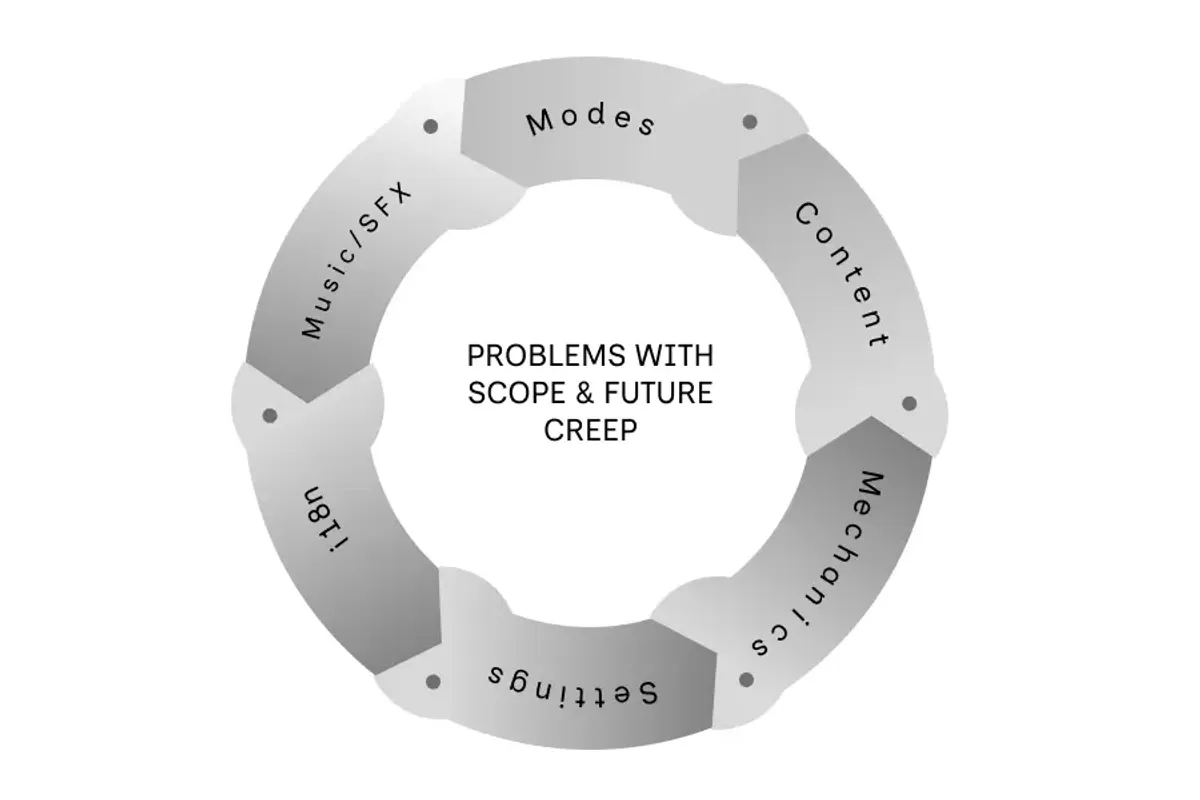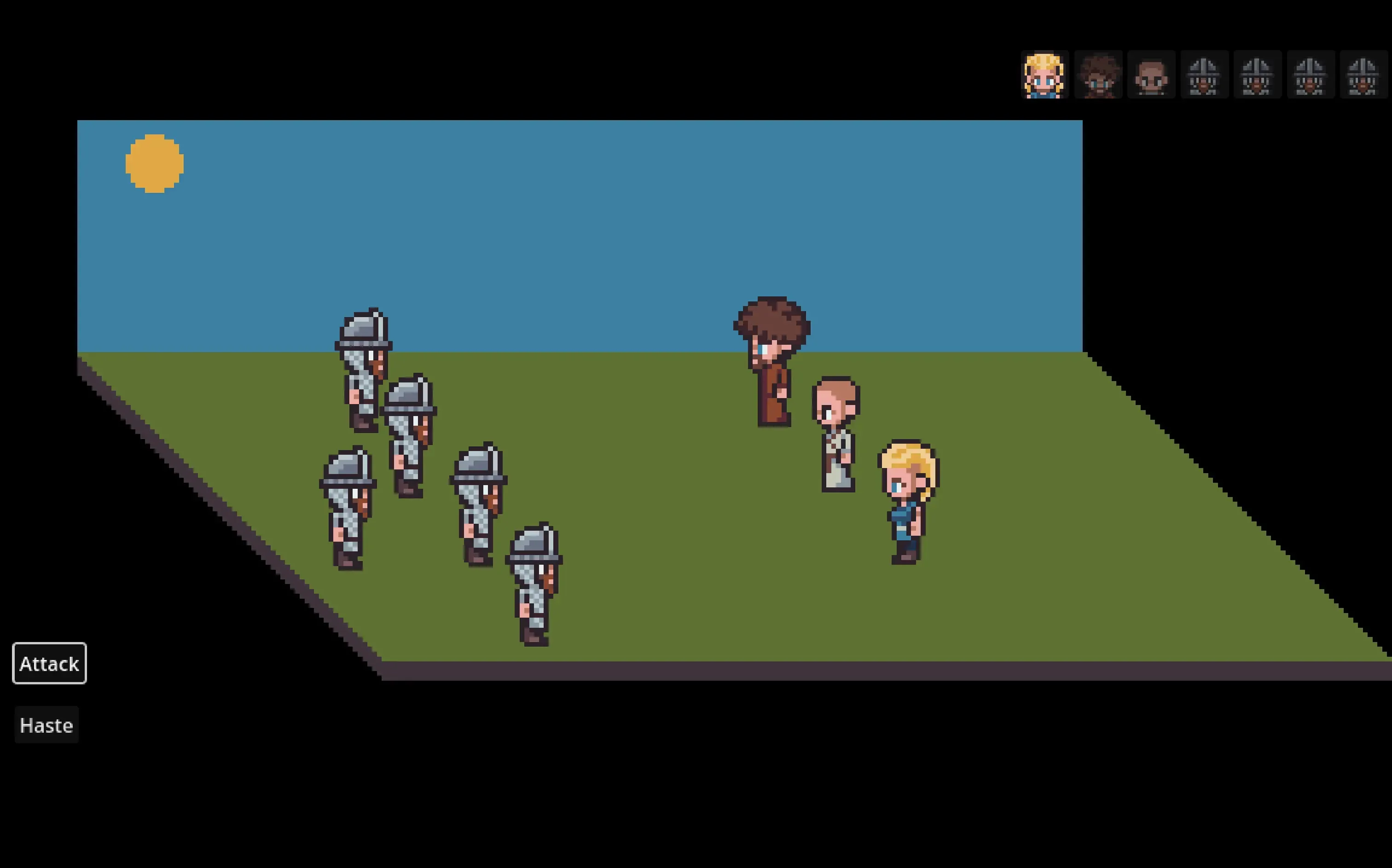Scope Creep vs. Future Creep in Game Development: How to Stay Focused and Ship Your Game
A discussion about how to identify and manage scope creep and future creep in game development. Discover the differences, practical examples, and strategies to avoid delays and deliver polished games on time

What you will read here applies to any project, but I will use game development as the main example. The concepts of scope creep and future creep are essential to understand and manage in any creative endeavor.
Game development is a complex process, and one of the biggest threats to success is the creeping expansion of scope or premature planning for hypothetical features. Whether it’s adding unplanned mechanics (scope creep) or designing for future needs (future creep), both can cause delays, overwork, and bloated projects. In this guide, we’ll explore what these terms mean, how they differ, and actionable strategies to manage them effectively.
I got inspired to write this after seeing this post on LinkedIn by Matt Hackett.
Scope Creep: When Your Game Grows Beyond Its Original Vision
Scope creep happens when unplanned features, mechanics, or content are added to a game during its development, often without proper evaluation. It can stem from impulsive decisions, team suggestions, or external feedback that grows the project beyond its original scope.
Example of Scope Creep: Imagine you’re creating a seven-chapter adventure game, the gameplay revolves around progressively challenging battles. Midway through development, someone suggests adding stealth mechanics. While exciting, this unplanned addition requires redesigning levels, reworking AI, and creating new assets, delaying the project significantly.
And believe me, I am creating a seven-chapter adventure game myself, so I know what I am talking about. Complications come also when you have another module in addition to the Adventure one. If you want to see how I am dealing will all this, you can see my devlogs on the itch.io page of Saxons & Vikings.

Why Scope Creep Happens:
- Vague or incomplete project goals.
- External feedback influencing changes mid-project.
- Lack of a proper change management process.
Impact of Scope Creep:
- Extended timelines.
- Overburdened teams.
- Reduced focus on core mechanics.
Future Creep: When You Plan for Features That Don’t Yet Exist
What is Future Creep? Future creep occurs when developers preemptively design or develop for features that might be added in the future. Unlike scope creep, future creep deals with hypothetical features that are not part of the current project plan.
Example of Future Creep: Using the same seven-chapter adventure game, suppose your battle system is designed to support multiplayer even though your game is a single-player experience. While this might seem like future-proofing, it wastes resources and creates unnecessary complexity.
Why Future Creep Happens:
- Overthinking potential expansions.
- Fear of reworking systems later.
- Desire to “future-proof” the game.
Impact of Future Creep:
- Wasted development time on unneeded features.
- Lower progress on immediate priorities.
- Risk of over-engineering.
Summary Table: Scope Creep vs. Future Creep
Aspect | Scope Creep | Future Creep |
|---|---|---|
When It Happens | During active development. | During planning or early development stages. |
Main Cause | Adding unplanned features impulsively. | Designing for hypothetical future needs. |
Focus | Immediate but unnecessary additions. | Long-term speculative planning. |
Impact | Bloated project, missed deadlines. | Over-engineering, wasted resources. |
How to Avoid Scope Creep and Future Creep
-
Start with a Clear Game Design Document (GDD): Outline the core mechanics, story progression, and features in a detailed GDD. Refer to it regularly to ensure the project stays aligned with its goals.
-
Use a Change Management Process: Evaluate all feature requests or suggestions with these questions:
- Does it align with the game’s core vision?
- What is the cost in time and resources?
- Can it be deferred to a later update or sequel?
-
Prioritize the Minimum Viable Product (MVP): Focus on delivering the smallest, playable version of your game. For instance, in the seven-chapter adventure game, prioritize finishing the core battles before adding optional side quests.
-
Separate Future Features from Current Development: Create a “future features” list but keep it separate from your current development tasks. For example, multiplayer or additional mechanics can be planned as post-launch expansions.
-
Communicate Risks to Your Team: Educate your team about the dangers of scope and future creep. Use visual aids like the “Scope Creep Cycle” to reinforce the importance of staying focused.
-
Set Milestones and Deadlines: Break your project into phases with clear deadlines. Celebrate completing milestones like finishing Chapters 1-3 before even thinking about additional features.
Conclusion: Keep Your Vision Clear
Both scope creep and future creep pose significant challenges in game development. While scope creep expands the project beyond its original vision, future creep diverts resources to hypothetical features. By staying focused on the present and deferring extras to future updates, you can deliver a polished, on-time product.
Remember: A game doesn’t have to do everything—it just has to do something well.
FAQ about Scope Creep vs. Future Creep in Game Development
Not necessarily. Some additions can enhance your game. However, without proper evaluation, scope creep often leads to delays and bloated projects.
Share article